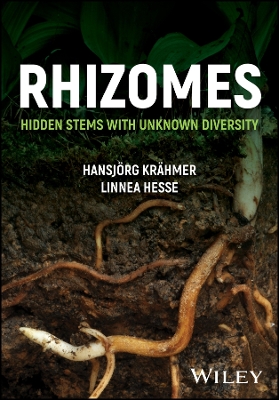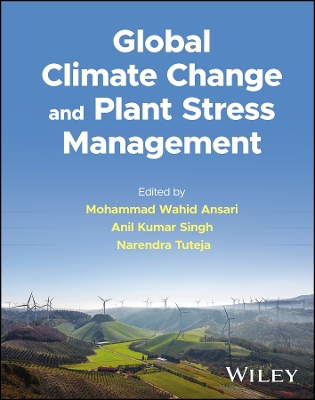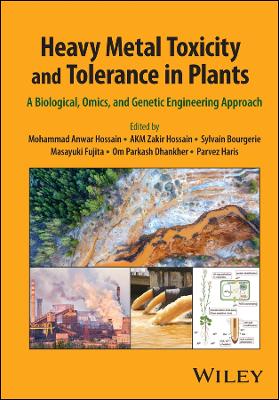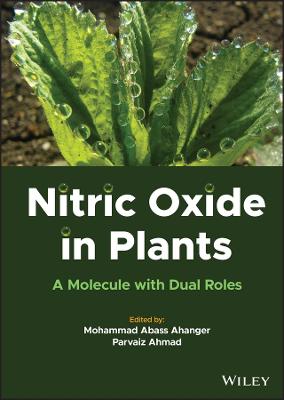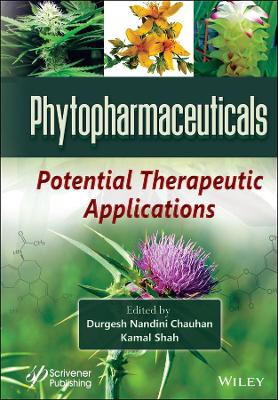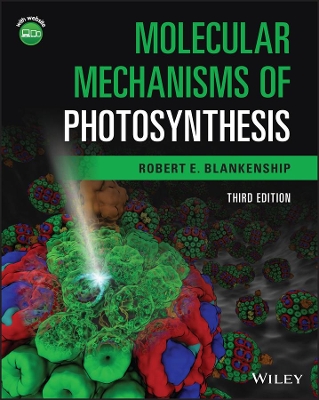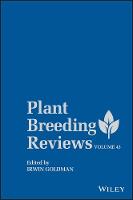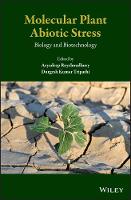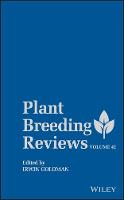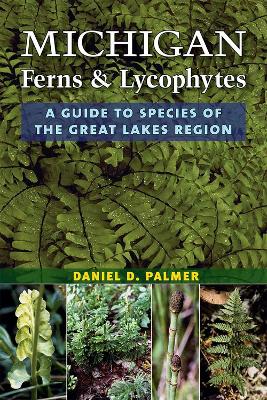Plant Abiotic Stress
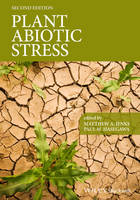 -15%
portes grátis
-15%
portes grátis
Plant Abiotic Stress
Jenks, Matthew A.; Hasegawa, Paul M.
John Wiley and Sons Ltd
01/2014
336
Dura
Inglês
9781118412176
15 a 20 dias
830
Preface xv
1 Flood tolerance mediated by the rice Sub1A transcription factor 1
Kenong Xu, Abdelbagi M. Ismail, and Pamela Ronald
1.1 Introduction 1
1.2 I solation of the rice Sub1 locus 3
1.3 Sub1 rice in farmers' fields 5
1.4 The Sub1 effect 7
1.5 The Sub1-mediated gene network 7
1.6 Conclusion 11
2 Drought tolerance mechanisms and their molecular basis 15
Paul E. Verslues, Govinal Badiger Bhaskara, Ravi Kesari, and M. Nagaraj Kumar
2.1 Introduction 15
2.1.1 The water potential concept 15
2.1.2 Escape, avoidance, and tolerance strategies of drought response 16
2.1.3 What is drought tolerance? 17
2.1.4 Responses to longer-term moderate water limitation versus stress shock and short-term response 18
2.1.5 Natural variation and next generation sequencing 19
2.2 Some key drought tolerance mechanisms 20
2.2.1 Osmoregulation/osmotic adjustment 20
2.2.2 Regulated changes in growth 22
2.2.3 Redox buffering and energy metabolism 24
2.2.4 Senescence and cell death 27
2.2.5 Metabolism 28
2.3 Emerging drought tolerance regulatory mechanisms 28
2.3.1 Drought perception and early signaling 29
2.3.2 Alternative splicing 31
2.3.3 Post-translational modification: ubiquitination and sumoylation 35
2.3.4 Kinase/phosphatase signaling 35
2.4 Conclusion 38
3 Stomatal regulation of plant water status 47
Yoshiyuki Murata and Izumi C. Mori
3.1 Stomatal transpiration and cuticular transpiration 47
3.2 Abiotic stress 51
3.2.1 Drought 51
3.2.2 Light and heat 54
3.2.3 Carbon dioxide 56
3.2.4 Ozone 57
3.3 Abiotic stress and biotic stress 59
3.3.1 Interaction between ABA signaling and MeJA signaling 59
3.3.2 Interaction with other signaling 60
3.4 C4 plants and crassulacean acid metabolism 61
3.5 Conclusion 63
4 Root-associated stress response networks 69
Jennifer P.C. To, Philip N. Benfey, and Tedd D. Elich
4.1 Introduction 69
4.2 Root organization 71
4.2.1 Root developmental zones 71
4.2.2 Root tissue types 73
4.3 Systems analysis of root-associated stress responses 76
4.4 Root-tissue to system-level changes in response to stress 78
4.4.1 Nitrogen 78
4.4.2 Salinity 85
4.4.3 Root system architecture in stress responses 92
4.5 Conclusion 94
5 Plant low-temperature tolerance and its cellular mechanisms 109
Yukio Kawamura and Matsuo Uemura
5.1 Introduction 109
5.2 Chilling injury 110
5.2.1 Cold inactivation of vacuolar H+-ATPase 110
5.2.2 Lipid phase transition (L? to L?) 112
5.2.3 Chill-induced cytoplasmic acidification 113
5.2.4 Light-dependent chilling injury 114
5.3 Freezing injury 115
5.3.1 Freeze-induced ultrastructures in the plasma membrane 117
5.3.2 Another freeze-induced injury of the plasma membrane 118
5.4 Cold acclimation 118
5.4.1 Lipid composition of the plasma membrane during cold acclimation 119
5.4.2 Changes in plasma membrane proteins during cold acclimation 120
5.4.3 Compatible solute accumulation during cold acclimation 120
5.5 Freezing tolerance 121
5.5.1 Membrane cryostability due to lipid composition 122
5.5.2 Membrane cryostability due to hydrophilic proteins 122
5.5.3 Compatible solutes and freezing tolerance 123
5.5.4 Membrane cryodynamics and membrane resealing 124
5.5.5 Other membrane cryodynamics 124
5.6 Conclusion 126
6 Salinity tolerance 133
Joanne Tilbrook and Stuart Roy
6.1 Plant growth on saline soils 133
6.1.1 Effects of salt stress on plant growth 135
6.1.2 Osmotic stress 136
6.1.3 Ionic stress 137
6.2 Tolerance mechanisms 138
6.2.1 Osmotic tolerance 138
6.2.2 Ionic tolerance 139
6.2.3 Ion exclusion 139
6.2.4 Ion tissue tolerance 140
6.3 Identification of variation in salinity tolerance 140
6.3.1 Variation in current crops 140
6.3.2 Variation in near wild relatives 141
6.3.3 Variation in model species 143
6.3.4 New phenomic approaches to identify variation in salinity tolerance 144
6.4 Forward genetic approaches to identify salinity tolerant loci and candidate genes 144
6.4.1 QTL mapping 144
6.4.2 Transcriptomics 148
6.4.3 Proteomics 149
6.4.4 Metabolomics 150
6.5 Known candidate genes for salinity tolerance 151
6.5.1 The high-affinity potassium transporter family 152
6.5.2 The salt overly sensitive pathway 153
6.5.3 Vacuolar Na+/H+ antiporters and vacuolar pyrophosphatases 154
6.5.4 Osmoprotectants 155
6.5.5 Calcium signaling pathways 155
6.6 Prospects for generating transgenic crops 156
6.6.1 Overexpression of genes involved with the transport of ions 158
6.6.2 Manipulation of genes involved in signaling pathways 159
6.6.3 Altering the expression of genes involved in compatible solute synthesis 159
6.6.4 The need for cell-type- and temporal-specific expression 159
6.7 Conclusion 161
7 Molecular and physiological mechanisms of plant tolerance to toxic metals 179
Matthew J. Milner, Miguel Pineros, and Leon V. Kochian
7.1 Introduction 179
7.2 Plant Zn tolerance 181
7.2.1 Physiology of Zn tolerance 181
7.2.2 Molecular biology of Zn tolerance 185
7.2.3 Role of metal-binding ligands in Zn tolerance 188
7.3 Plant Cd tolerance 190
7.4 Plant aluminum tolerance 190
7.4.1 Physiology of Al tolerance 190
7.4.2 Molecular biology of Al tolerance 194
7.5 Conclusion 196
8 Epigenetic regulation of abiotic stress responses in plants 203
Viswanathan Chinnusamy, Monika Dalal, and Jian-Kang Zhu
8.1 Introduction 203
8.2 Epigenetic controls of gene expression 204
8.2.1 Establishment of histone code 205
8.2.2 DNA cytosine methylation 205
8.3 E pigenetic regulation of abiotic stress responses 210
8.3.1 Stress regulation of genes for histone modification and RdDM 211
8.3.2 Gene regulation mediated by stress-induced histone modifications 212
8.3.3 Gene regulation mediated by stress-induced changes in dna methylation 218
8.3.4 Stress-induced transposon regulation 219
8.4 Transgenerational inheritance and adaptive value of epigenetic modifications 220
8.5 Conclusion 221
9 Genomics of plant abiotic stress tolerance 231
Dong-ha Oh, Maheshi Dassanayake, Hyewon Hong, Suja George, Seol Ki Paeng, Anna Kroporn ika, Ray A. Bressan, Sang Yeol Lee, Dae-Jin Yun, and Hans J. Bohnert
9.1 Genomics in plant research-an introduction 231
9.2 Plant genomes 2012-a transient account 236
9.3 Genomes, transcriptomes, and bioinformatics 237
9.4 Genomes that inform about abiotic stress 240
9.5 Plants evolved for salinity tolerance 242
9.6 ARMS genomes-Thellungiella genome sequences 244
9.6.1 Lineage-specific gene duplications 244
9.6.2 Divergence of transcriptome profiles and responses 247
9.6.3 Lineage-specific genes 249
9.7 A breeding strategy for abiotic stress avoidance 249
9.8 Conclusion 250
10 QTL and association mapping for plant abiotic stress tolerance: trait characterization and introgression for crop improvement 257
DELPHINE FLEURY and Peter Langridge
10.1 Introduction 257
10.2 Genetic mapping of abiotic stress tolerance traits 260
10.2.1 Quantitative trait loci 260
10.2.2 QTL for abiotic stress tolerance 262
10.3 Association mapping of abiotic stress tolerance traits 263
10.3.1 Linkage disequilibrium and population structure 263
10.3.2 Association study of abiotic stress tolerance 264
10.4 Transfer of QTL findings to breeding programs 265
10.5 Issues in genetic analysis of abiotic stress tolerance 268
10.5.1 Phenotyping methods 268
10.5.2 Selection of germplasm for genetic analysis 270
10.5.3 Stability of QTL across environments 272
10.6 Current directions of quantitative genetics for abiotic stress tolerance 274
10.6.1 Physiological components of abiotic stress tolerance QTL 274
10.6.2 Integration of physiological components into abiotic stress tolerance QTL 275
10.6.3 Meta QTL 276
10.6.4 New population designs for QTL mapping 276
10.7 Conclusion 279
Index 289
Color plate section is located between pages 132 and 133
Preface xv
1 Flood tolerance mediated by the rice Sub1A transcription factor 1
Kenong Xu, Abdelbagi M. Ismail, and Pamela Ronald
1.1 Introduction 1
1.2 I solation of the rice Sub1 locus 3
1.3 Sub1 rice in farmers' fields 5
1.4 The Sub1 effect 7
1.5 The Sub1-mediated gene network 7
1.6 Conclusion 11
2 Drought tolerance mechanisms and their molecular basis 15
Paul E. Verslues, Govinal Badiger Bhaskara, Ravi Kesari, and M. Nagaraj Kumar
2.1 Introduction 15
2.1.1 The water potential concept 15
2.1.2 Escape, avoidance, and tolerance strategies of drought response 16
2.1.3 What is drought tolerance? 17
2.1.4 Responses to longer-term moderate water limitation versus stress shock and short-term response 18
2.1.5 Natural variation and next generation sequencing 19
2.2 Some key drought tolerance mechanisms 20
2.2.1 Osmoregulation/osmotic adjustment 20
2.2.2 Regulated changes in growth 22
2.2.3 Redox buffering and energy metabolism 24
2.2.4 Senescence and cell death 27
2.2.5 Metabolism 28
2.3 Emerging drought tolerance regulatory mechanisms 28
2.3.1 Drought perception and early signaling 29
2.3.2 Alternative splicing 31
2.3.3 Post-translational modification: ubiquitination and sumoylation 35
2.3.4 Kinase/phosphatase signaling 35
2.4 Conclusion 38
3 Stomatal regulation of plant water status 47
Yoshiyuki Murata and Izumi C. Mori
3.1 Stomatal transpiration and cuticular transpiration 47
3.2 Abiotic stress 51
3.2.1 Drought 51
3.2.2 Light and heat 54
3.2.3 Carbon dioxide 56
3.2.4 Ozone 57
3.3 Abiotic stress and biotic stress 59
3.3.1 Interaction between ABA signaling and MeJA signaling 59
3.3.2 Interaction with other signaling 60
3.4 C4 plants and crassulacean acid metabolism 61
3.5 Conclusion 63
4 Root-associated stress response networks 69
Jennifer P.C. To, Philip N. Benfey, and Tedd D. Elich
4.1 Introduction 69
4.2 Root organization 71
4.2.1 Root developmental zones 71
4.2.2 Root tissue types 73
4.3 Systems analysis of root-associated stress responses 76
4.4 Root-tissue to system-level changes in response to stress 78
4.4.1 Nitrogen 78
4.4.2 Salinity 85
4.4.3 Root system architecture in stress responses 92
4.5 Conclusion 94
5 Plant low-temperature tolerance and its cellular mechanisms 109
Yukio Kawamura and Matsuo Uemura
5.1 Introduction 109
5.2 Chilling injury 110
5.2.1 Cold inactivation of vacuolar H+-ATPase 110
5.2.2 Lipid phase transition (L? to L?) 112
5.2.3 Chill-induced cytoplasmic acidification 113
5.2.4 Light-dependent chilling injury 114
5.3 Freezing injury 115
5.3.1 Freeze-induced ultrastructures in the plasma membrane 117
5.3.2 Another freeze-induced injury of the plasma membrane 118
5.4 Cold acclimation 118
5.4.1 Lipid composition of the plasma membrane during cold acclimation 119
5.4.2 Changes in plasma membrane proteins during cold acclimation 120
5.4.3 Compatible solute accumulation during cold acclimation 120
5.5 Freezing tolerance 121
5.5.1 Membrane cryostability due to lipid composition 122
5.5.2 Membrane cryostability due to hydrophilic proteins 122
5.5.3 Compatible solutes and freezing tolerance 123
5.5.4 Membrane cryodynamics and membrane resealing 124
5.5.5 Other membrane cryodynamics 124
5.6 Conclusion 126
6 Salinity tolerance 133
Joanne Tilbrook and Stuart Roy
6.1 Plant growth on saline soils 133
6.1.1 Effects of salt stress on plant growth 135
6.1.2 Osmotic stress 136
6.1.3 Ionic stress 137
6.2 Tolerance mechanisms 138
6.2.1 Osmotic tolerance 138
6.2.2 Ionic tolerance 139
6.2.3 Ion exclusion 139
6.2.4 Ion tissue tolerance 140
6.3 Identification of variation in salinity tolerance 140
6.3.1 Variation in current crops 140
6.3.2 Variation in near wild relatives 141
6.3.3 Variation in model species 143
6.3.4 New phenomic approaches to identify variation in salinity tolerance 144
6.4 Forward genetic approaches to identify salinity tolerant loci and candidate genes 144
6.4.1 QTL mapping 144
6.4.2 Transcriptomics 148
6.4.3 Proteomics 149
6.4.4 Metabolomics 150
6.5 Known candidate genes for salinity tolerance 151
6.5.1 The high-affinity potassium transporter family 152
6.5.2 The salt overly sensitive pathway 153
6.5.3 Vacuolar Na+/H+ antiporters and vacuolar pyrophosphatases 154
6.5.4 Osmoprotectants 155
6.5.5 Calcium signaling pathways 155
6.6 Prospects for generating transgenic crops 156
6.6.1 Overexpression of genes involved with the transport of ions 158
6.6.2 Manipulation of genes involved in signaling pathways 159
6.6.3 Altering the expression of genes involved in compatible solute synthesis 159
6.6.4 The need for cell-type- and temporal-specific expression 159
6.7 Conclusion 161
7 Molecular and physiological mechanisms of plant tolerance to toxic metals 179
Matthew J. Milner, Miguel Pineros, and Leon V. Kochian
7.1 Introduction 179
7.2 Plant Zn tolerance 181
7.2.1 Physiology of Zn tolerance 181
7.2.2 Molecular biology of Zn tolerance 185
7.2.3 Role of metal-binding ligands in Zn tolerance 188
7.3 Plant Cd tolerance 190
7.4 Plant aluminum tolerance 190
7.4.1 Physiology of Al tolerance 190
7.4.2 Molecular biology of Al tolerance 194
7.5 Conclusion 196
8 Epigenetic regulation of abiotic stress responses in plants 203
Viswanathan Chinnusamy, Monika Dalal, and Jian-Kang Zhu
8.1 Introduction 203
8.2 Epigenetic controls of gene expression 204
8.2.1 Establishment of histone code 205
8.2.2 DNA cytosine methylation 205
8.3 E pigenetic regulation of abiotic stress responses 210
8.3.1 Stress regulation of genes for histone modification and RdDM 211
8.3.2 Gene regulation mediated by stress-induced histone modifications 212
8.3.3 Gene regulation mediated by stress-induced changes in dna methylation 218
8.3.4 Stress-induced transposon regulation 219
8.4 Transgenerational inheritance and adaptive value of epigenetic modifications 220
8.5 Conclusion 221
9 Genomics of plant abiotic stress tolerance 231
Dong-ha Oh, Maheshi Dassanayake, Hyewon Hong, Suja George, Seol Ki Paeng, Anna Kroporn ika, Ray A. Bressan, Sang Yeol Lee, Dae-Jin Yun, and Hans J. Bohnert
9.1 Genomics in plant research-an introduction 231
9.2 Plant genomes 2012-a transient account 236
9.3 Genomes, transcriptomes, and bioinformatics 237
9.4 Genomes that inform about abiotic stress 240
9.5 Plants evolved for salinity tolerance 242
9.6 ARMS genomes-Thellungiella genome sequences 244
9.6.1 Lineage-specific gene duplications 244
9.6.2 Divergence of transcriptome profiles and responses 247
9.6.3 Lineage-specific genes 249
9.7 A breeding strategy for abiotic stress avoidance 249
9.8 Conclusion 250
10 QTL and association mapping for plant abiotic stress tolerance: trait characterization and introgression for crop improvement 257
DELPHINE FLEURY and Peter Langridge
10.1 Introduction 257
10.2 Genetic mapping of abiotic stress tolerance traits 260
10.2.1 Quantitative trait loci 260
10.2.2 QTL for abiotic stress tolerance 262
10.3 Association mapping of abiotic stress tolerance traits 263
10.3.1 Linkage disequilibrium and population structure 263
10.3.2 Association study of abiotic stress tolerance 264
10.4 Transfer of QTL findings to breeding programs 265
10.5 Issues in genetic analysis of abiotic stress tolerance 268
10.5.1 Phenotyping methods 268
10.5.2 Selection of germplasm for genetic analysis 270
10.5.3 Stability of QTL across environments 272
10.6 Current directions of quantitative genetics for abiotic stress tolerance 274
10.6.1 Physiological components of abiotic stress tolerance QTL 274
10.6.2 Integration of physiological components into abiotic stress tolerance QTL 275
10.6.3 Meta QTL 276
10.6.4 New population designs for QTL mapping 276
10.7 Conclusion 279
Index 289
Color plate section is located between pages 132 and 133

